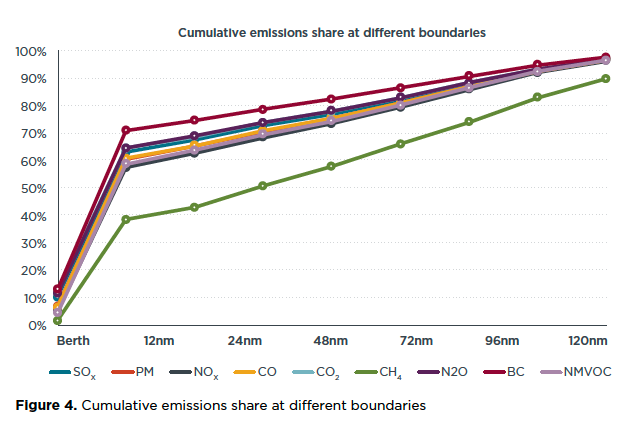Marine engine emission standards for China's domestic vessels
Working Paper
Distribution of air pollution from oceangoing vessels in the Greater Pearl River Delta, 2015
China is the world’s second largest economy and the largest trading nation in the world. Its coastline is visited by thousands of cargo-carrying ships on a daily basis. The Greater Pearl River Delta (GPRD), which sits in southern China facing the South China Sea, is a heavily populated and prosperous region with heavy ship traffic. Because this traffic contributes to poor local air quality, the Chinese government has identified the GPRD region as a key target for steps to control emissions from ships.
This working paper compiles a high-resolution ship emissions inventory in this region. The purpose of this work is threefold:
- To quantify the magnitude of major air pollutants from oceangoing vessels (OGVs);
- To identify the top contributing ship classes in this region; and
- To understand the distribution of at-sea emissions from OGVs, from at berth to 200 nm offshore as a first step to identifying control polices.
Our results showed that:
- In 2015, OGVs emitted 104 thousand tonnes (kilotonnes [kt]) of sulfur oxides (SOX), 14 kt of particulate matter (PM), and 150 kt of nitrogen oxides (NOX). This is approximately 24%, 3%, and 17% of respective emissions from all sources in the GPRD region.
- Container ships alone emitted about 60% of all air pollution from OGVs in 2015, making them a clear target of future air pollution control policies. Bulk carriers and oil tankers were also important contributors to total emissions.
- In our study region, about 9% of total emissions were emitted at berth. This share increased to 63% at the 12-nm boundary and then continued to increase mildly moving further away. The 96-nm boundary captured about 82% of total emissions. Expanding the current Domestic Emission Control Area (DECA) regulations to 12 nm would reduce emissions roughly 7 fold. Further expansion, for example via an international emission control area (ECA) out to 100 nm, would provide even greater benefits.


